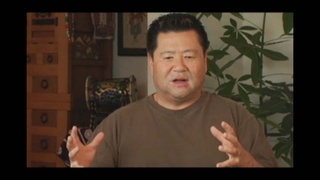Interviews
Lack of taiko at Cherry Blossom Festival
First time, I saw the parade at that Japantown. I think dancers. Kimono, beautiful kimono, and walking nicely. So two nights, no noise. So, my town, when I was young, the taiko is very…only popular. So I always interested. And taiko, when they play, they move me. So that experience, through that experience, the Cherry Blossom Festival wasn’t exactly that festival feeling. So my friend also there, fresh off the boat—all fresh off the boat people get together—“Let’s make a Japanese festival.” Then my friend made a omikoshi, carry the mikoshi. Then I played drum to make noise just like a Japanese festival. That’s the beginning. I started 1968, Autumn festival. Parade and Japan Center area, I put it all over the place.
Date: January 27, 2005
Location: California, US
Interviewer: Art Hansen, Sojin Kim
Contributed by: Watase Media Arts Center, Japanese American National Museum.





